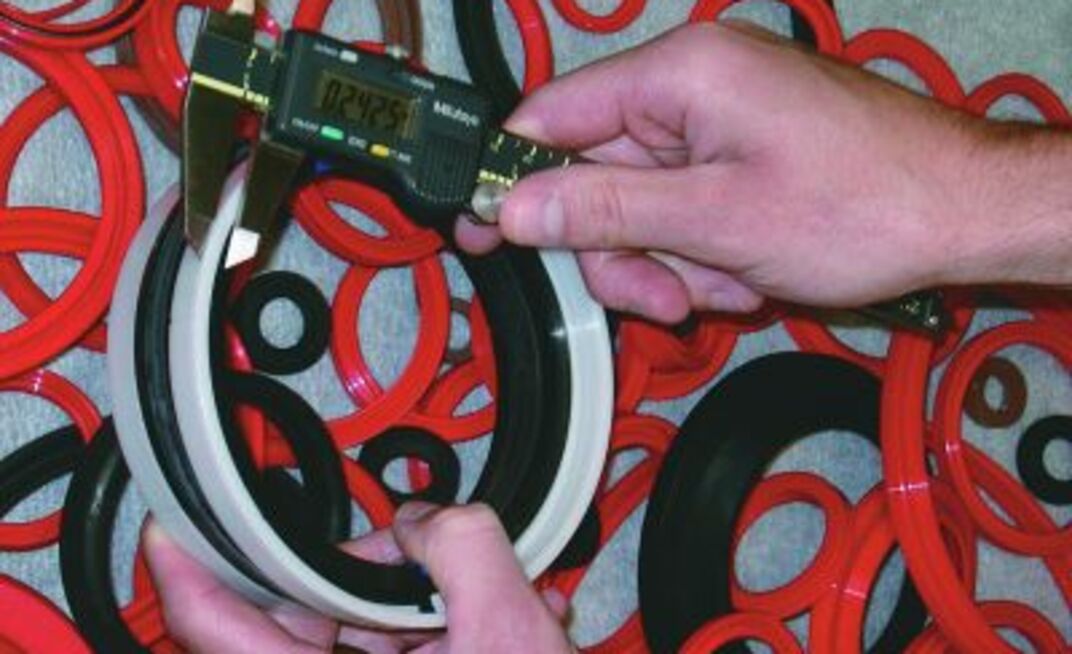As a critical component of longwall roof support systems, the health of hydraulic cylinders is crucial and the expenditure of just a few dollars on the correct seals can ensure optimum system performance.
Specialist industrial seal manufacturer, EPM, manufactures a wide range of seals, gaskets and o-rings for a variety of industries. Located in Atlanta, Georgia, the company also offers a trouble-shooting consulting service to help companies overcome seal problems.
Company president Jerry Whitlock, a 32-year seal industry veteran known as ‘The Seal Man’, said seal failure was usually caused by one of four main factors.
“Improper installation is a major cause of seal failure,” he said.
“The important things to be watched during seal installation are cleanliness, protecting the seal from nicks and cuts, and proper lubrication.”
Whitlock said other problem areas were tightening of the seal gland where there is an adjustable gland follower, or folding over a seal lip during installation. Installing the seal upside down was also common.
“The solution to these problems is commonsense and taking reasonable care during assembly,” Whitlock said.
Once during repair of a longwall cylinder, Whitlock asked the repair technician to let him do a quick examination of the inside of the tube just before installation of the rod portion of the cylinder. This had been cleaned prior to mounting on the repair rack.
“By this time, a layer of coal dust had covered the inside of the tube. I reached down inside, placed my forefinger against the side and slid it up to the end of the tube showing the repair tech what was on the inside - to his surprise. I pointed out the inside needed to cleaned just before installation of the rod, otherwise, expect a much shorter seal life,” he said.
During the same installation Whitlock watched the technician reach for a container of copper filled anti-seize paste to swab the seals. Despite the solid copper particles in the paste it was being used to make the piston slide into the tube easier.
“I told him that if he wanted to use any lubrication, it should be good clean, non-petroleum based grease – like waterless hand cleaner – without the pumice. Petroleum based grease can cause some seal components to swell slightly and make installation a challenge.
“What I really like to see is the use of glycerin, or Corn Huskers Hand Lotion which can be purchased at any pharmacy. This glycerin based lotion is thick and will have no effect on the seals,” Whitlock said.
The second major factor in hydraulic seal failure is system contamination. It is usually caused by external elements such as dirt, grit, mud, dust, even ice and internal contamination from circulating metal chips, breakdown products from fluid, hoses or other degradable system components.
“As most external contamination enters the system during rod retraction, the proper installation of a rod wiper/scraper is the best solution. Internal contamination can be prevented by a proper filtering of system fluid.”
Contamination is indicated by scored rod and cylinder bore surfaces, excessive seal wear and leakage - and sometimes tiny pieces of metal embedded in the seal.
A third reason for failure is chemical breakdown of the seal material. This is most often the result of incorrect material selection in the first place or a change of hydraulic system fluid.
Misapplication or use of non-compatible materials can lead to chemical attack on the seal by fluid additives, hydrolysis and oxidation reduction of seal elements. Chemical breakdown can result in a loss of seal lip interface, softening of the seal durometer, excessive swelling or shrinkage. Discoloration of the seal can also be an indicator of chemical attack.
Water based hydraulic fluids can destroy some seal materials, especially polyurethane which is not specifically designed for use in water.
“A huge challenge I have encountered is if the fluid is water with oil emulsion, the ratio of oil to water is not controlled. When the ratio needs to be 5% oil emulsion, it can range from 1-10%. This causes problems in lubrication of the seals and shortens the seal life,” he said.
Finally, heat degradation should be suspected when the failed seal exhibits a hard, brittle appearance and/or shows a breaking away of parts of the seal lip or body. Heat degradation results in loss of sealing lip effectiveness through excessive compression set and/or loss of seal material. Causes of this condition may be the use of incorrect seal material, high dynamic friction, excessive lip loading, no heel clearance and proximity to an outside heat source.
Correction of heat degradation problems may involve reducing the seal lip interference, increasing lubrication, or changing of the seal material. In borderline situations the possibility that upper temperature limits, in hydraulic cylinder seals at the seal interface, may be increasing by up to 50DGF due to running friction caused by the sliding action of the lips should be considered.
Whitlock said it was not necessary to buy replacement seals from the original hydraulic cylinder manufacturer.
“A solution to many of the problems encountered with seals is proper training in seal function, seal installation and determining seal failure causes. Seek the help of a professional. While a seal is a very simple component, it can cause huge problems in the function and performance of capital equipment.”
























